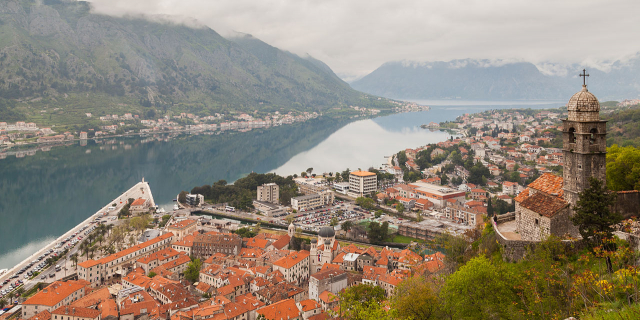Dubrovačke gradske zidine
( Walls of Dubrovnik )
The Walls of Dubrovnik (Croatian: Dubrovačke gradske zidine) are a series of defensive stone walls surrounding the city of Dubrovnik in southern Croatia. Ramparts were built in the outlying areas of the city, including the mountain slopes as part of a set of statues from 1272. The existing city walls were constructed mainly during the 13th–17th centuries. The walls run an uninterrupted course of approximately 1,940 metres (6,360 ft) in length, encircling most of the old city, and reach a maximum height of about 25 metres (82 ft).
Refugees from destroyed towns such as Epidaurus fled to what would become the defensive settlement of Dubrovnik (also known later as Ragusa) which would become a haven of refuge with the construction of its town walls. The walls were reinforced by three circular and 14 quadrangular towers, five bastions (bulwarks), two angular fortifications and the large St. John's Fortress. Land walls were additi...Read more
The Walls of Dubrovnik (Croatian: Dubrovačke gradske zidine) are a series of defensive stone walls surrounding the city of Dubrovnik in southern Croatia. Ramparts were built in the outlying areas of the city, including the mountain slopes as part of a set of statues from 1272. The existing city walls were constructed mainly during the 13th–17th centuries. The walls run an uninterrupted course of approximately 1,940 metres (6,360 ft) in length, encircling most of the old city, and reach a maximum height of about 25 metres (82 ft).
Refugees from destroyed towns such as Epidaurus fled to what would become the defensive settlement of Dubrovnik (also known later as Ragusa) which would become a haven of refuge with the construction of its town walls. The walls were reinforced by three circular and 14 quadrangular towers, five bastions (bulwarks), two angular fortifications and the large St. John's Fortress. Land walls were additionally reinforced by one larger bastion and nine smaller semicircular ones, like the casemate Fort Bokar, the oldest preserved fort of that kind in Europe. The moat that ran around the outside section of the city walls, which were armed by more than 120 cannons, provided superb city defense capabilities.
In 1979, the old city of Dubrovnik, which includes a substantial portion of the old walls of Dubrovnik, joined the UNESCO list of World Heritage Sites. Today, the Walls of Dubrovnik are one of the most popular tourist attractions in Croatia, with more than 1.2 million visitors in 2019.

































Add new comment